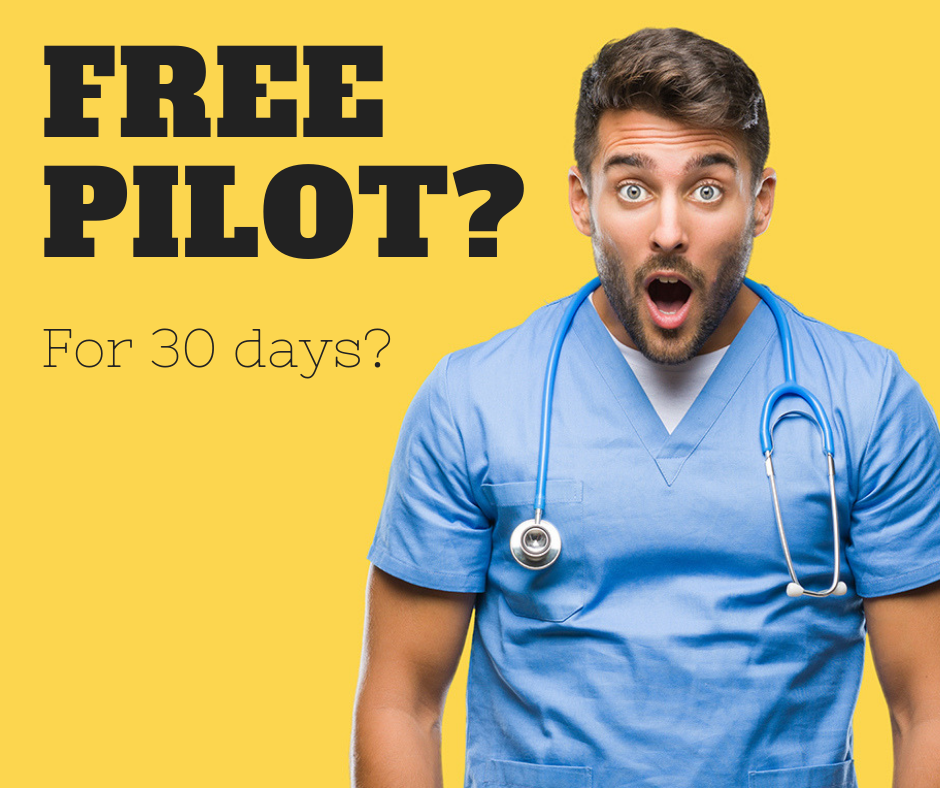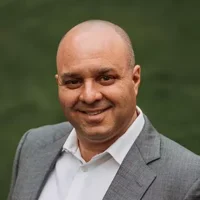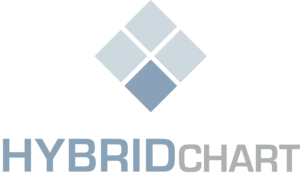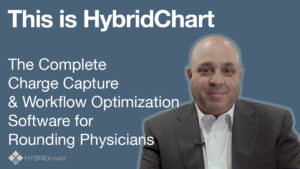On Friday, November 23rd, Dr. Sanders had the opportunity to sit down with Bob Roth and discuss HybridChart and the state of healthcare in America.
Health Futures—Taking Stock in You invites healthcare innovators and leaders to participate in their radio talk show airing LIVE on Fridays at noon. Bob, the host and managing partner of Cypress Home Care Solutions, has interviewed hundreds of thought leaders, bringing thoughtful and insightful discussions to their audience weekly.
Bob’s mission is to cover the latest news, opportunities, and issues affecting our community in the medical and healthcare space. The show’s emphasis is placed on the aging adult population, which is very relevant, as Arizona is a hub to snowbirds from all over the United States. It is anticipated that by 2020, Arizonans aged 60+ will make up one-quarter of the State’s population, which is approximately 2.1 million people. Bob’s innovative approach captures an audience that is both progressive and affluent, covering subjects that will give the radio audience information on living a healthier and happier life.
***Here are some excerpts from the interview—the 2nd in a series of 4 blogs. The entire show can be heard by clicking here.
Bob Roth:
“Welcome back! You are listening to “Health Futures –Taking Stock in You.” I’m your host, Bob Roth. If you are just tuning in, I have Dr. Greg Sanders here. He is a cardiologist in town and he is also the founder and CEO of HybridChart. When we broke from the first segment, we were talking about data and how data is really king, and I think the technology world and innovation world and the medical world are finally coming together and trying to solve a lot of issues.
Dr. Greg Sanders:
“It definitely is! As a population, I think what we are starting to all recognize is that if we want to help take care of people properly, we need data for analytics. We need to be able to self-improve AND improve the processes. The challenge we have is that the infrastructures that doctors are practicing in are broken and disjointed. The current structure doesn’t allow for collaboration.
In my office, I have an electronic health record and I round at five hospitals, and each one of those five hospitals could be using different software. You think they would all talk to each other, but shockingly they don’t.
So, the poor patient who is hospitalized—all of their out-patient records are not readily
available, and the doctor that is in the hospital does not have easy access to it. The patient then goes to rehab. The rehab people have no access to any of the data from the hospital, and then they may go home with some home health and now the home health people are struggling for access, so it is kind of a siloed type of environment where nothing is talking to each other.
The other problem is if you look at modern healthcare records, they are these giant sieves of data.”
Bob Roth:
“Right, right, and that is what you are trying to solve with HybridChart.”
Dr. Greg Sanders:
“I recognized the disconnection early on; I also recognized that doctors were eager to jump on medical technology, but when you talk about operational technology, they are reluctant.
Technology that assists with inefficiencies and ways to improve their whole workflow—they are not interested in it but scared.
Doctors are very apprehensive about disrupting their very delicate balance, and they don’t quite see that saving time upstream will translate into more time they can spend either going home, being with their families and enjoying a quality of life and not burning out or spending more time with patients. It also tends to cut down on medical errors and mistakes that happen during handoffs, during transitions—I can’t tell you how many times patients go from one facility to another and their medications are wrong, and it takes a while before everyone sorts out that they are on the wrong meds.”
Bob Roth:
“Right, right, and you know it is interesting you talk about not wanting to be disruptive but that is what you are being. You are being disruptive. You are breaking down the barriers. You are disrupting the operational way healthcare is being delivered by creating this.”
Dr. Greg Sanders:
“With the ultimate goal that if doctors can go back to being doctors, they will take better care of patients. The ultimate recipient of the benefit is the patient. And the population.”
Bob Roth:
“Minimize the errors and have knowledge at your fingertips. You know, I can tell you this, and we talked about this the other day—I’m on the governor’s Advisory Council on Aging. Governor Ducey appointed me there two years ago, and I will tell you four years ago, less than 20% of the hospitals and healthcare systems communicated with their EMRs and now it is over 60%. I mean, we are making progress, but we are not there yet because it is a very slow process.”
Dr. Greg Sanders:
“It is, and adoption is slow, and it’s just a slow roll, but I truly believe that we have an opportunity here. There is a lot of data available, but, unfortunately, a lot of it does not talk to each other. We have an opportunity to collect data which ultimately will filter back and help the delivery of healthcare; help us make better decisions, help us reduce medical errors, and that is what HybridChart is all about. It started as a rounding tool—a collaboration tool—to assist doctors to manage the overwhelming task of trying to round on patients at different facilities.”
Bob Roth:
“Talk to me just so that our listening audience can really understand. What does HybridChart really look like? Are doctors able to use your devices using tablets or using computers, or all of the above?”
Dr. Greg Sanders:
“All the above. You are using either your smartphone, a tablet or a desktop to be able to access the system. And, you don’t own any servers, and you don’t have to load any software into your own environment. It is all being delivered to you. Look, we wanted to create a model that was very easy for doctors, and we wanted to minimize barriers to entry, so we have very nice pricing and subscription models that don’t require long-term contracts… things like that.”
Bob Roth:
“So, if you were doing rounds, and let’s say you were right down the street here at HonorHealth Shea Campus. You would go in there with your device, log into the app on your phone, and begin seeing patients? “
Dr. Greg Sanders:
“Right. So, I round there and access their electronic record to get patient vitals, patient labs, look at notes from other doctors, and put in my own notes. But remember, no one in that building works for me so if I want to submit a charge—my billers actually don’t even live in this state—so how am I going to get that information to them? Plus, my partners and I need to collaborate. For instance, we are going into a weekend and so whoever is rounding today may not necessarily be on call for the weekend. So, how am I going to convey to them which patients they need to see and where I left off with providing treatment for them? Am I going to call them? That will be an hour conversation.”
Bob Roth:
“Right. There is a lot of information to hand over.”
Dr. Greg Sanders:
“Am I going to fax it to them? You better not because that is not compliant with all the privacy laws. Am I going to create a spreadsheet and email it to them? That is a good way to get fined. So, I am not going to do any of that stuff, and remember, text messages are not secure and pagers, believe it or not, are no longer approved for messaging. We built into the HybridChart app a secure communication tool that allows doctors to talk back and forth, plus a cloud-based census list of all the patients needed to be seen.”
Bob Roth:
“That is so cool, and especially when you sit there and talk about billers, I would imagine there is a lot of intuitiveness to this because you’re a doctor and you created this for doctors. So, a doctor logs into your app and you hit a certain code in terms of what you were there to see them for, and that goes to your billing office and they are able to bill health insurance companies accordingly?”
Dr. Greg Sanders:
“Yes, so back to our original discussion, I straddle the fence between being a practicing physician and being a software developer—I wrote all the code for HybridChart.”
Bob Roth:
“That is so cool.”
Dr. Greg Sanders:
“If you put software developers into a room and say: ‘Produce medical software’—what comes out is going to work, but then you hand it to a doctor—they’re going to be frustrated. They really don’t understand our world and I’m a practicing doctor, so I know what needs to be done. I know what is clunky what is not clunky, and what the workflow is.”
Bob Roth:
“I love that, and it really does take somebody with your experience and knowledge be able to make it user-friendly for the physician to be able to use that software.”
Dr. Greg Sanders:
“Yeah, I mean our training is funny. Most doctors usually start the training for 10 minutes and then they go, ‘I got it. Leave me alone, I got this already’. It’s easy because I recognized the need to build it simulating the workflow of a physician.”
Bob Roth:
“Made for physicians by a physician. That is what is needed, so doctors can spend more time with patients. When we come back, let’s chat about population health. Thank you, Dr. Sanders, for a very interesting segment.”
***(This is the second excerpt in a four-part series of excerpts from the Bob Roth’s Radio Show: Health Futures, Taking Stock in You with Dr. Greg Sanders). You can listen to this and more of Bob’s interviews here.
Bob Roth is the Managing Partner for Cypress Home Care Solutions in Phoenix, Arizona. Visit Cypress at http://cypresshomecare.com/ or call 602.264.8009.
Dr. Gregory Sanders is a practicing Cardiologist and the CEO/Founder of HybridChart based in Scottsdale, Arizona. Visit HybridChart at www.hybridchart.com
Less stress, more money through charge capture automation, and more time in your day.
At HybridChart, we provide technology that connects your healthcare team, increases efficiencies, AND improves your bottom line. HybridChart’s cloud-based software adapts to your practice’s unique workflow and will improve your profitability and patient outcomes by utilizing our 5 features: census management, charge capture, secure messaging, discharge management, and data analytics.
NEVER miss another charge and get PAID for the work you do!








